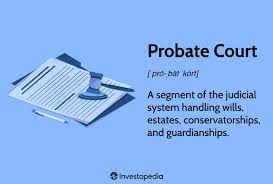I. Introduction
Probate is a legal process that occurs after an individual passes away. It involves the administration of the deceased person’s estate, including the distribution of assets and settling of debts. This guide aims to provide an in-depth understanding of probate, its key components, and the steps involved.
II. Importance of Probate
A. Legal Recognition of Death
Probate serves as the legal recognition of an individual’s death. It provides a structured framework for managing the deceased person’s affairs.
B. Asset Distribution
One of the primary purposes of probate is to ensure the orderly distribution of the deceased person’s assets among heirs or beneficiaries.
III. Key Players in Probate
A. Executor or Administrator
The person responsible for managing the probate process is called the executor if named in the will, or an administrator if appointed by the court in the absence of a will.
B. Beneficiaries
Beneficiaries are individuals named in the will or determined by the laws of intestacy to inherit the deceased person’s assets.
C. Creditors
Creditors are individuals or entities to whom the deceased person owed debts. The probate process includes settling these debts using the deceased’s assets.
IV. Initiating the Probate Process
A. Validating the Will
The probate process typically begins with the validation of the deceased person’s will. This involves confirming its authenticity and adherence to legal requirements.
1. Legal Formalities
- Details about the legal formalities required for a valid will.
2. Will Contests
- Circumstances under which the validity of a will may be contested and the legal procedures involved.
B. Intestate Succession
In cases where there is no valid will, the laws of intestacy determine how the deceased person’s assets are distributed among heirs.
V. Probate Assets and Non-Probate Assets
A. Probate Assets
Assets that are subject to probate, including real estate solely owned by the deceased, personal belongings, and other investments.
B. Non-Probate Assets
Assets that bypass probate, such as assets held in joint tenancy, assets with designated beneficiaries, and assets held in a living trust.
VI. The Probate Process
A. Inventory of Assets
The executor or administrator compiles an inventory of the deceased person’s assets, providing a comprehensive list for the probate court.
1. Appraisal of Assets
- Procedures for appraising and valuing different types of assets in the estate.
B. Notification of Creditors
Creditors are formally notified of the deceased person’s passing, and they have a specified period to file claims against the estate.
1. Validity of Creditor Claims
- The process for evaluating and validating creditor claims, including potential disputes.
C. Payment of Debts and Expenses
The estate’s assets are used to pay off outstanding debts, funeral expenses, and the costs associated with the probate process.
D. Distribution of Assets
Once debts and expenses are settled, the remaining assets are distributed to the beneficiaries or heirs according to the terms of the will or intestacy laws.
1. Disputes and Challenges
- Potential disputes among beneficiaries and legal procedures for resolving conflicts.
VII. Probate and the Court System
A. Court Approval
Certain actions within the probate process, such as the sale of assets, require court approval to ensure compliance with legal requirements.
1. Legal Representation
- The role of attorneys and legal representation in navigating the probate court system.
B. Probate Timeline
An overview of the typical timeline for completing the probate process, including factors that may affect its duration.
VIII. Strategies to Avoid or Simplify Probate
A. Estate Planning
The role of comprehensive estate planning in minimizing the impact of probate, including the use of trusts, joint ownership, and beneficiary designations.
B. Small Estate Procedures
Some jurisdictions offer simplified probate procedures for smaller estates, streamlining the process for qualifying cases.
Conclusion
In conclusion, probate is a complex yet essential legal process that plays a crucial role in the orderly distribution of a deceased person’s assets. Understanding the key components, players, and steps involved in probate is vital for individuals navigating this aspect of the legal system. By exploring strategies to avoid or simplify probate and recognizing jurisdiction-specific considerations, individuals can make informed decisions to ensure the efficient administration of their estates.
This guide serves as a comprehensive resource for individuals seeking a detailed understanding of probate, its intricacies, and the factors influencing its implementation. For the most accurate and jurisdiction-specific information, individuals are encouraged to consult legal professionals and refer to government resources.

